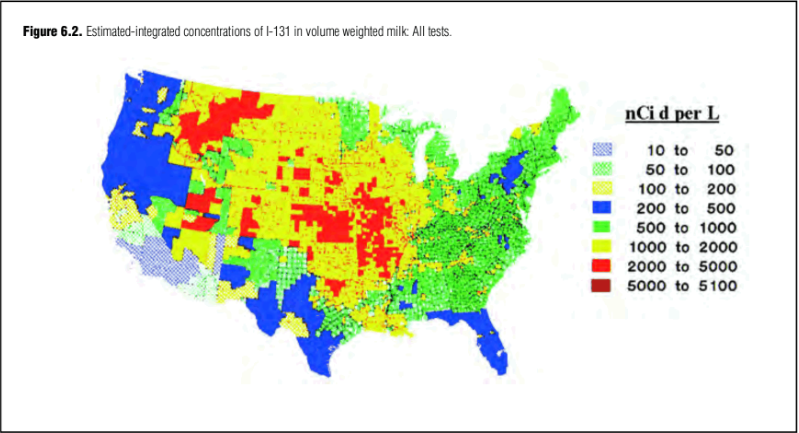Montana Senators Vote to Expand Radiation Exposure Act Benefits
If signed into law, the bill would expand compensation for nuclear fallout victims to Montanans for the first time
By Micah Drew
Millions of people around the country flocked to the big screens last summer to witness Christopher Nolan’s epic film about the man who ushered in the Atomic Age. Oppenheimer grossed nearly $1 billion worldwide and on Sunday received seven Academy Awards.
The blockbuster hit followed the eponymous physicist as he assembled the team for the Manhattan Project and developed the first nuclear weapons. The climactic moment comes with the Trinity test, the moment an atomic explosion first tainted the world.
What isn’t acknowledged in the film (which clocked in at three hours in length) was the destructive domestic result of fallout from the Trinity and subsequent above-ground nuclear tests, which sent radioactive particles into the atmosphere, where they blew downwind of the testing sites and settled across thousands of miles of soil.
In 1990, Congress passed the Radiation Exposure Compensation Act (RECA), acknowledging that nuclear testing done in the 1950s and 1960s at the Nevada Test Site was linked to high rates of cancer, leukemia and other illnesses among so-called “downwinders,” or, those living downwind of the test site. The legislation provides lump sum compensation to downwinders, as well as individuals who worked as uranium miners, millers and transporters, and those who worked at the test site.
On March 7, the U.S. Senate passed a bill that would extend RECA, currently set to sunset in June, for five more years and expand the coverage to individuals living in six additional states, including Montana.
“Montanans who were exposed to dangerous radiation because of their own government’s actions deserve to be compensated for any suffering caused by that exposure,” U.S. Sen. Jon Tester, D-Mont., said in a statement. “This is about doing right by Montanans and I’m proud to have joined Republicans and Democrats to help right this wrong.”

When RECA was initially passed, it covered downwinders who lived in 21 counties spread across Nevada, Utah and Arizona during the height of the nuclear testing at the Nevada Test Site. The law expanded to cover 19 different forms of cancer, with $50,000 available in compensation, but the geographic radius hasn’t changed in 34 years.
That’s despite a 1997 study by the National Cancer Institute (NCI) that found that, of the top 25 counties in the country with the highest estimated radiation dose from nuclear testing, 15 are in Montana, including Meagher County, which topped the national list.
Fallout dust from the nuclear test blew across the country, coating soil and fields where livestock grazed. Radioactive iodine-131 collected in the milk of cows and goats and would then be ingested by humans where it collects in the thyroid gland. The NCI study estimated that most of Montana registered radiation doses far exceeding the rest of the country.

During last year’s legislative session, the Montana Senate passed a resolution to include the state in RECA. Numerous individuals testified before the Legislature, providing firsthand accounts of family members whose illnesses were linked to fallout, and, according to reporting by the Daily Montanan, the passage culminated a more than 20-year effort by state officials to include coverage for Montanans under RECA.
Tester cosponsored similar legislation during his first Senate term in 2009 with then-Sen. Max Baucus and both of Idaho’s Republican senators, Jim Risch and Mike Crapo.
The latest push to expand RECA has been led by Crapo, as well as Sen. Ben Ray Lujan (D-N.M.) and Sen. Josh Hawley (R-Mo.), who wanted coverage for victims of nuclear waste contamination around St. Louis. A bill to expand and extend the law passed the senate 61-37 last year as part of the National Defense Authorization Act (NDAA). However, the House stripped the amendment from the final version of the NDAA in December.
Hawley sponsored the standalone bill that went before the Senate this month, which again drew bipartisan support, passing 69-30, and a statement from the White House that President Joe Biden would sign it into law.
“I’m glad to support a bill that will help so many Montanans who are negatively impacted by radiation exposure,” said Sen. Steve Daines, R-Mont., in a statement.
The legislation will again face hurdles in the House, where some conservative members are seeking to tamp down on spending measures. The bill is estimated to cost $50 billion over the next five years, according to Sen. Hawley’s office.